A rare breed of dogs, combining the unsurpassed grace of the exterior and such a high hunting passion, agility in the pursuit of a wild beast. Russian Borzoi is an object of inspiration for artists, sculptors and writers. The hunt with her participation was described by A. N. Tolstoy. His delightful poetic lines were dedicated to her by A.S. Pushkin.
Crowned persons from England and Russia kept the Russian greyhounds at court, and canine hunting in Russia rarely did without the participation of dogs of this unique breed. It is not in vain that the profile of the dog adorns the emblem of the Russian Cynological Federation, symbolizing the quality of the Russian selection style.
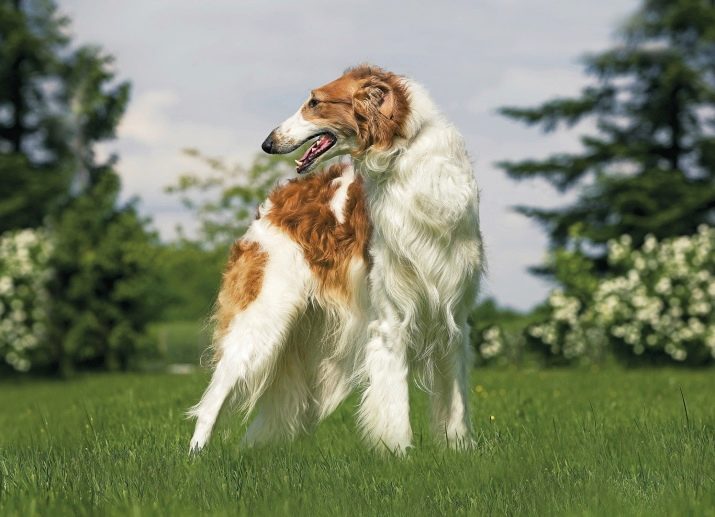
Historical facts
The history of this ancient breed has its roots in Kievan Rus. According to one of several versions, this ancient breed was brought to us by the Tatar-Mongol invaders - adherents of canine hunting games. However, this version is contrary to the famous fresco in the St. Sophia Cathedral in Kiev, built in the XI century, with the character of the dog very similar in appearance to the modern greyhound.
These fast and dexterous animals were used by Vasily III and many Russian nobles. In the XVI century, the Tatar princes, resettled by Ivan the Terrible in Kostroma and Kazan, crossed greyhounds from Asia with local hunting breeds.
The resulting breed, after adding some other blood, was called "Slovenian dogs."
Already then, in ancient times, the breed was appreciated. A historical fact is known when Boris Godunov sent the Shah of Iran to Abbas several greyhounds as a gift. By this time the breed received the best qualities not only in hunting skills, but also in the exterior, combining the nature of Asians and the appearance of Europeans.
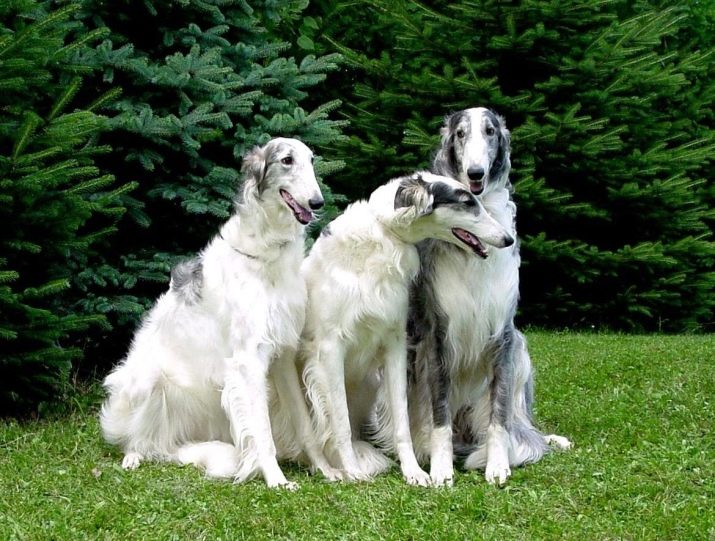
In Russia, canine hunting with the participation of greyhounds quickly gained popularity among the nobility, and in 1888 a standard was established. In the XIX century, the vast majority of landowners considered it a rule to keep dozens of greyhounds in their yards.
This was partly due to the significant number of wolves that bred in those days.
In the future, Russian hunters continued attempts to improve the breed, mixing the blood of thoroughbred domestic canines - as a result, the so-called Kurlandka appeared. Its distinguishing features were a thinner, long and thicker coat, with a lesser degree of bumpiness.
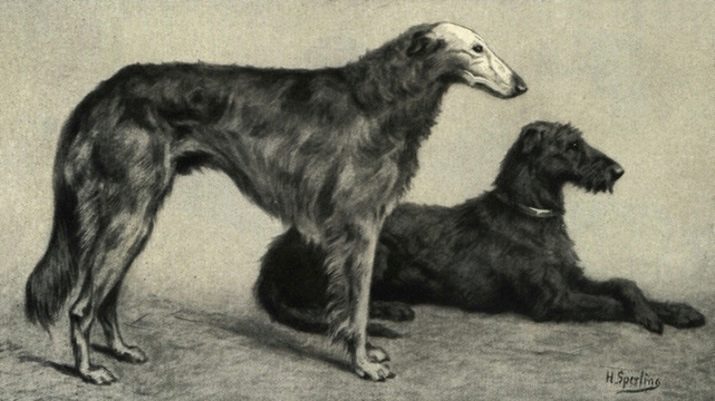
Since the beginning of the 19th century, greyhounds were rare and extremely expensive. There were several types of dogs of the Courland type, but in the end, the breeders managed to come to a common standard. Today it is an elegant, sophisticated and dexterous breed with a peculiar character.
Dogs of this particular breed traditionally live in the court of English crowned persons. A few greyhounds were presented to the Princess of Wales and the Duchess of Newcastle by Alexander II. Amazed by the beauty of the greyhounds, the Duchess started breeding dogs in his private club Nots. Greyhounds as characters are constantly featured in elite commercials.
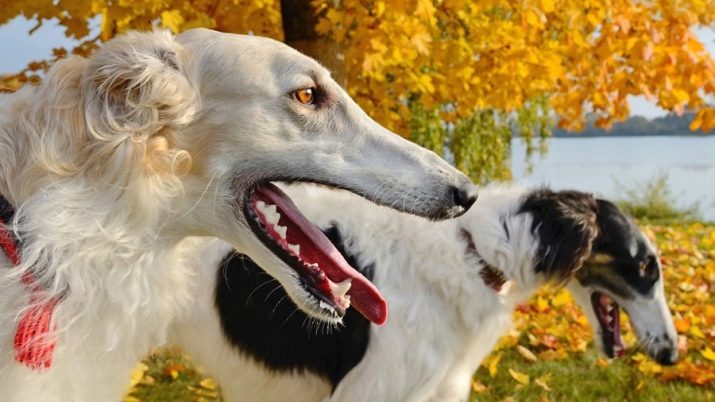
The famous Hollywood stars D. Harlow and O. Havilland also kept these dogs.
Since the time of Ivan the Terrible, borzoi dogs, as a rule, have received traditional sonorous names, for example, Rada, Young Lady, Zlata and the like. Borzoi dogs were named for their unusually high quality of playfulness, and the name "canids" came from the term "canine", which reflects the waviness and silkiness of the coat.
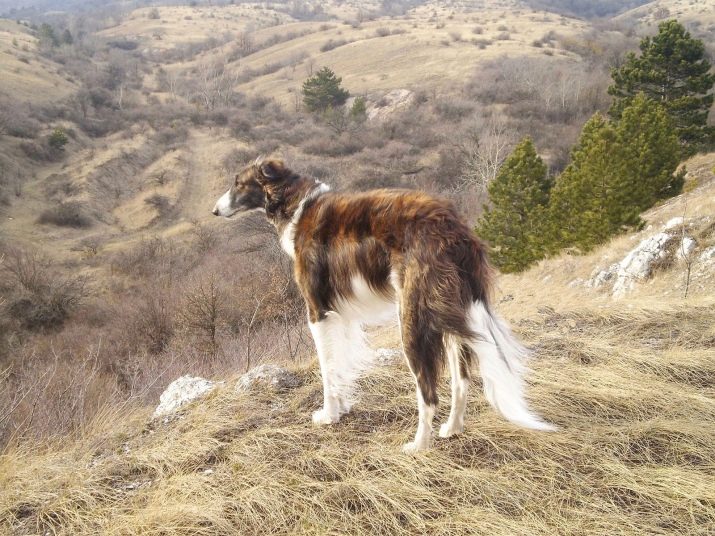
Hunting for greyhounds is only a temporary episode, at other times they are ordinary pets, with their own special, aristocratic character. The ancient instinct of the pursuer arises exclusively from the beast.
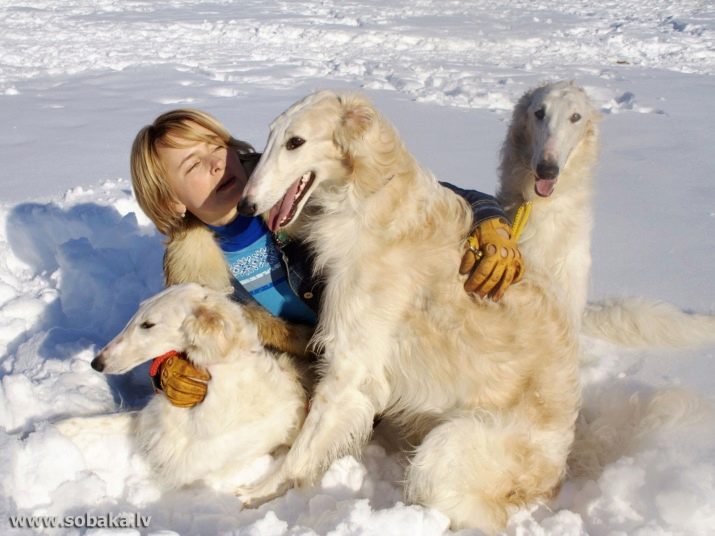
Breed description
Of the greyhounds most popular are:
- Afghan hounds;
- Russian greyhounds;
- Russian hounds;
- Moscow greyhounds.
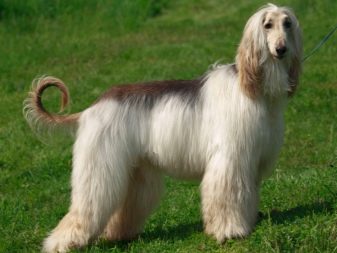

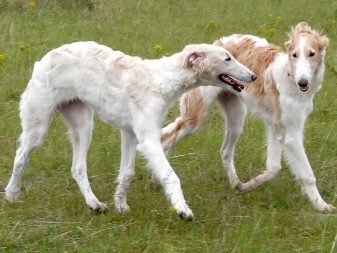
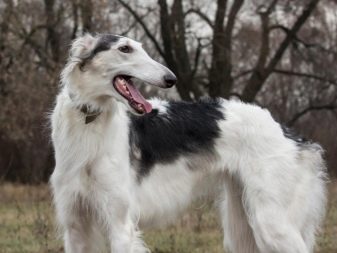
Among them, perhaps, a more graceful appearance is possessed by the Russian greyhound (hound) and the Afghan hound. The long and thick coat that protects dogs in difficult mountain conditions and from hard Russian frost gives them special appeal. The ancient name of the dog’s fur coat - canine - has survived to our time and is widely used among professionals and amateurs when it comes to the Russian line.
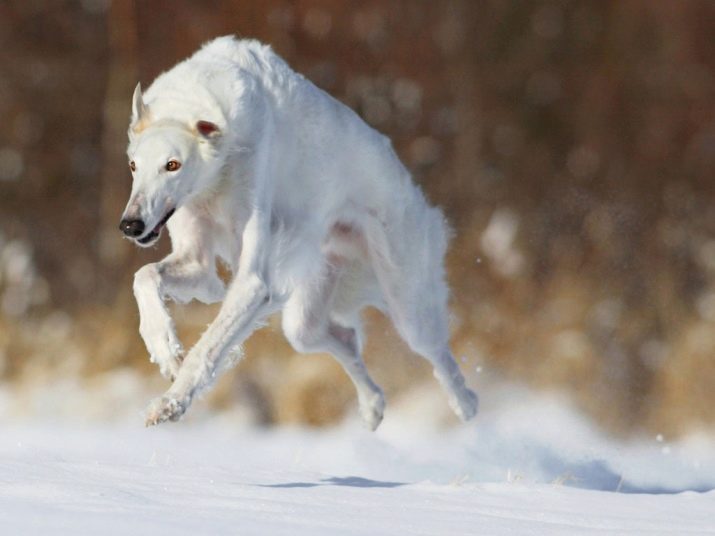
Their silky with brilliant shimmering canine practically does not get dirty, which is different from the cover of dogs of other breeds, including smooth-haired.
The main feature of the Russian line is that unlike many other breeds, which simply became a decoration of the house, it has not lost its main purpose and is quite capable of driving a wolf or a hare. This is an exclusively hunting breed that has retained all the necessary qualities for the corral of a wild beast.

Despite this, greyhounds live quietly in apartment conditions, with a constant and vigorous walk.
The appearance of a greyhound is sheer sophistication, grace and sophistication. Having considerable growth and decent weight (males at the withers reach 85 cm, bitches up to 78 cm), greyhounds move with enviable lightness and enviable speed: jerk - up to 100 km / h, working mode - 60 km / h. As excellent runners, dogs are often used in competitive runs.
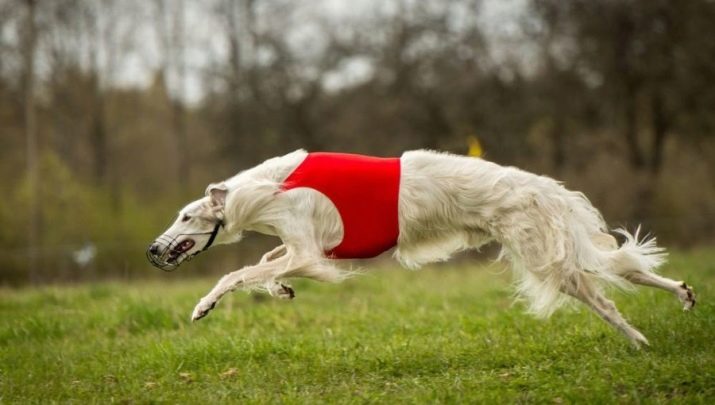
Greyhound looks so harmonious and elegant that it was the object of inspiration for many artists, poets and writers. Special grace and beauty, as the main characteristics of the greyhounds, was most talented in the paintings of the artist Louis Icarus. After his work, the unusually proud image of the greyhounds soon turned into a fashionable trend. Sculptures, engravings and other works of art appeared, dedicated to the extraordinary breed.
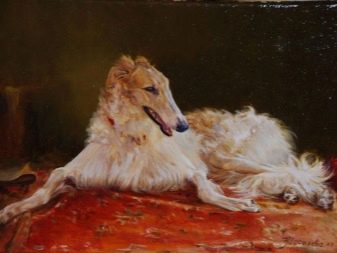
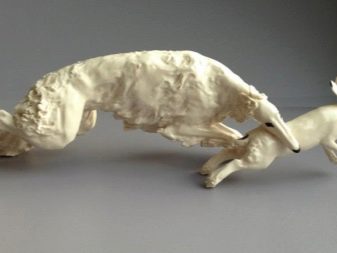
According to FCI (standard), the breed description is different:
- dry, strong and somewhat elongated physique;
- large, light, elastic and sweeping jumps when trotting;
- fast career with wide jumps in pursuit of the beast;
- long, thick, silky and wavy hair, and on the head, ears and legs a shorter and denser coat;
- thin and supple skin;
- strong case;
- lean form and well-developed muscular system;
- dry, elongated head shape;
- large, dark nose with raised nostrils;
- thin, tight-fitting lips;
- small, beautiful and high-ranking ears, in an excited state, slightly rising forward;
- large brown, obliquely placed eyes (with a visualization radius of 270 degrees), dark, closely adjacent eyelids;
- large fangs with a scissor bite;
- muscular, slightly elongated neck with a dense cover;
- elongated, voluminous, elongated to the elbows chest (greyhounds have the largest heart by volume);
- muscular, elastic, arched back and elongated, strong and wide lower back;
- long, muscular croup;
- straight, lean and muscular forelegs;
- narrow, oval-shaped paws with elastic pads;
- long, thin, saber-shaped, low-lying tail.
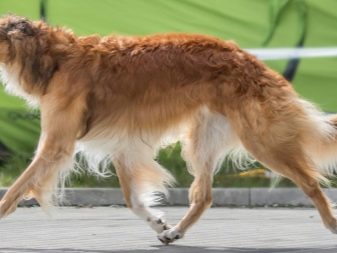
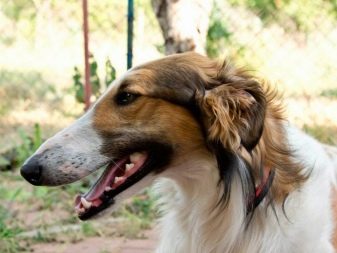
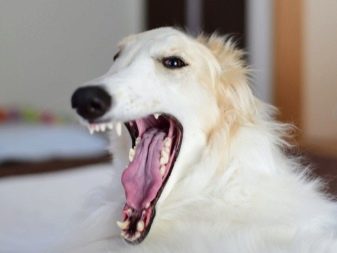
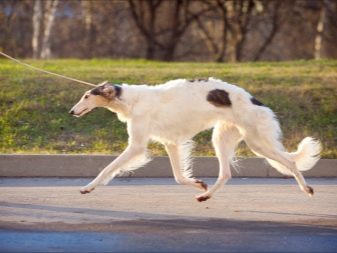
Depending on the size and extent of the spots, the color of the dogs is divided into 2 types.
- Piebald, with a dominant background of dark, red, gray and other colors. Pezhins are located against this background - light blotches, mainly on the front of the body and on the tip of the tail. Pezhin can be located from the nose to the frontal, in the form of a collar on the neck, located in the sternum, abdomen and legs.
- Spotted (light), with various inclusions of dark, reddish and gray shades, located in the area of the eyes, ears, trunk or upper tail.

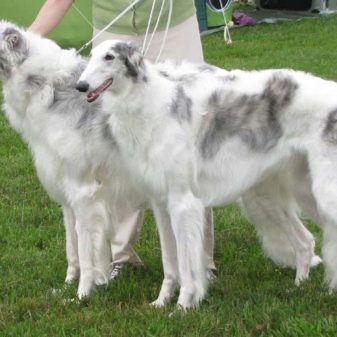
Actually, the color of the greyhounds is diverse:
- white;
- grayish-fawn with silver tint;
- fawn with dark shades (burmatic);
- red with a black face, the tips of the ears and a black stripe on the back and body (murugi);
- gray of various shades;
- fawn, reddish, black, grayish in the form of stripes or ovals (forelock);
- black with tan marks on the face, eyebrows, cheeks, sternum and paws;
- burmatite of various shades from light to reddish shades, with powdered canine;
- dark burmatite (fawn with brownish awn);
- gray-fawn (for example, a gray back with fawn sides).
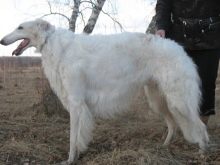
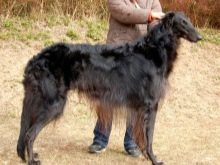

External defects of the rock can have both pronounced and weakly expressed character. So, for an excessively stiff hair, a greyhound will no longer be able to get the highest score, but for aggressiveness or an incorrect bite, the dog risks not getting into the competition.
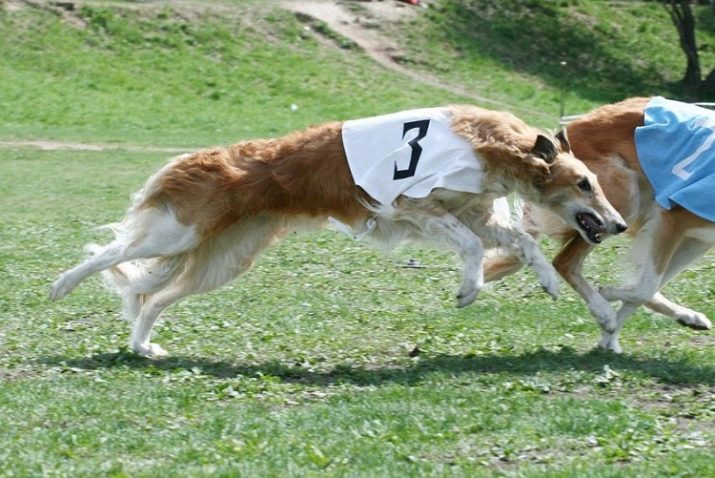
Typically, the commission rejects borzois for serious violations of the requirements of the standard. Such can be: lack of teeth, discrepancy to the standard of color, improper arrangement of fangs.
Greyhounds have a lifespan of about 13 years. They mature in about a year and a half, reaching a weight of 48 kg. At 2 months, the weight of the dog is about 12 kg, a two-month-old puppy is an exact copy of what will grow in the future.
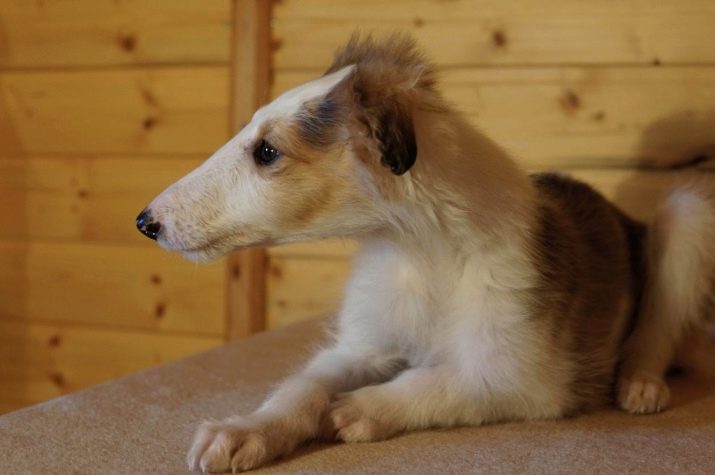
It is noteworthy that the greyhound is often involved in the now unusually popular racing for mechanical hares - a very spectacular and exciting spectacle.
Advantages and disadvantages
No matter how beautiful the breed may be, there are always pros and cons. The pluses of the Russian greyhound, taking into account its hunting specialization, include:
- high speed qualities;
- stamina and excellent eyesight;
- some phlegm in the domestic environment, but not during the hunt;
- excellent physical condition;
- aesthetics, beauty and grace.
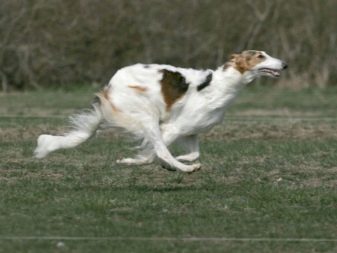
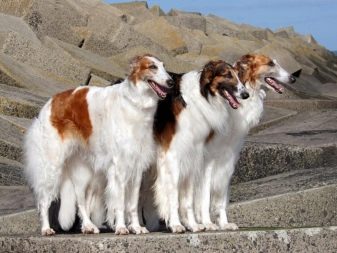
By cons:
- in apartment conditions the dog requires a lot of space;
- the need for frequent and long walks;
- inborn readiness for persecution, often arising outside the hunt.
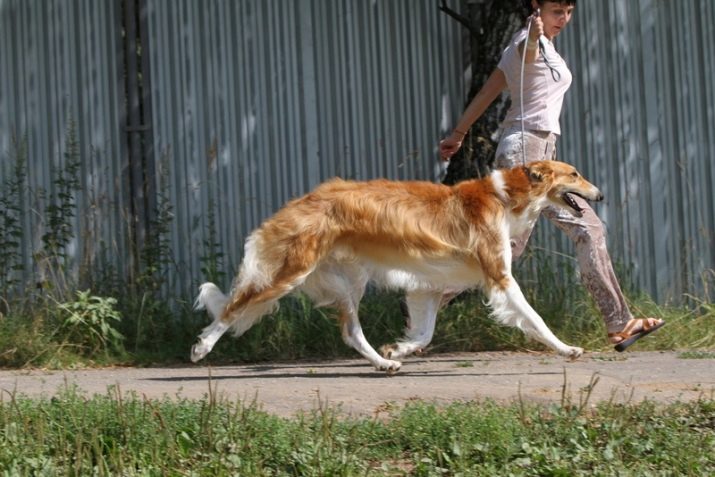
A dog should not be started for people who have a shortage of free time.
Character Features
In domestic conditions, the greyhound demonstrates the stability and calmness of the psyche. However, during the hunt it is a completely different animal - the hunting instincts let themselves know, the dogs instantly get excited and are ready to pursue the game relentlessly for tens of kilometers.
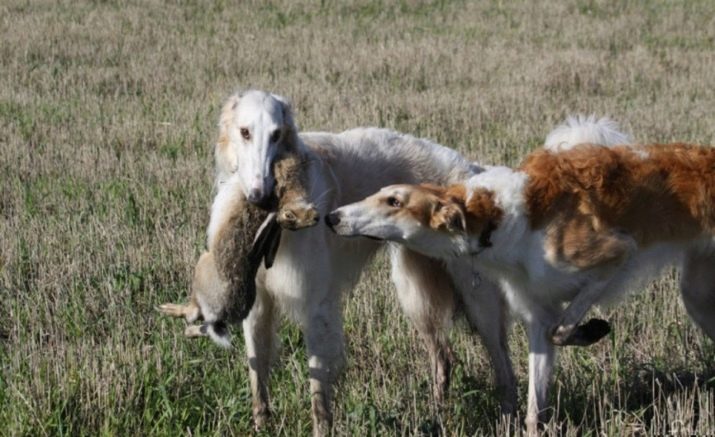
The dog has a certain aristocracy and delicacy of behavior, it is balanced and so proud that there is not even a suspicion of its subordination to man. In this behavior, even a certain mysticism is felt.
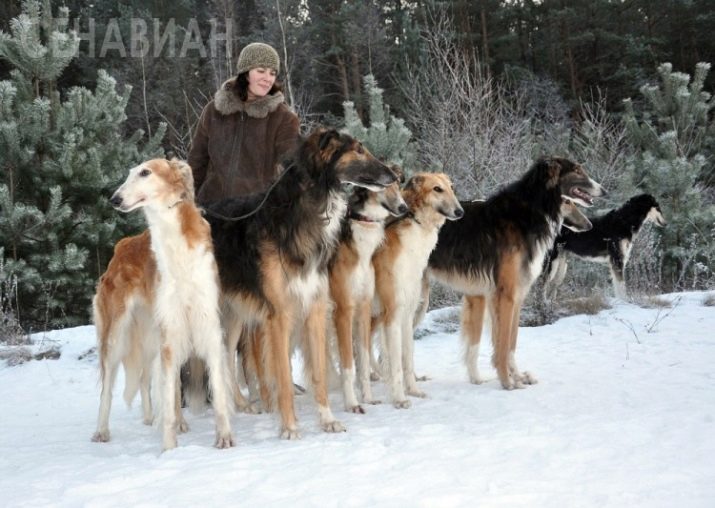
The greyhound perceives strangers indifferently and even somewhat arrogantly. He loves housekeeping children, there is no aggressiveness towards people. However, on the street, outside aggression may allow outside aggression.
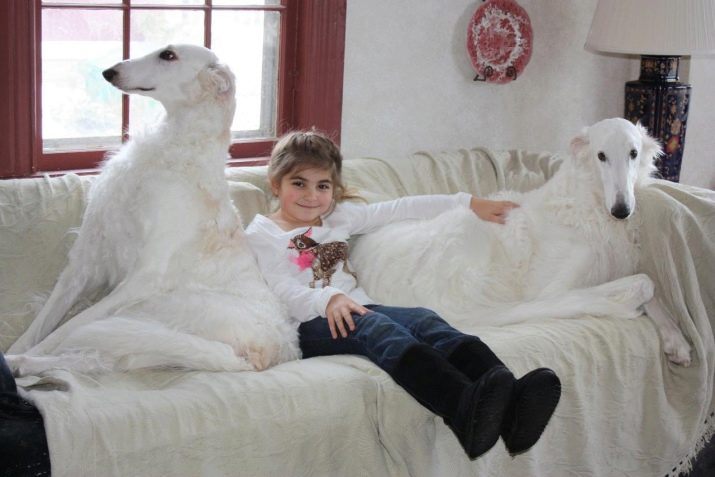
Greyhound is tolerant of pets, provided that he lives with them.
Surprisingly, this large and extraordinary animal adapts well to life in the apartment. She has almost no smell of “dog”, and in the period between molting (late spring), wool is not visible in the apartment. A restrained and aristocratic animal does not like to bark in vain.
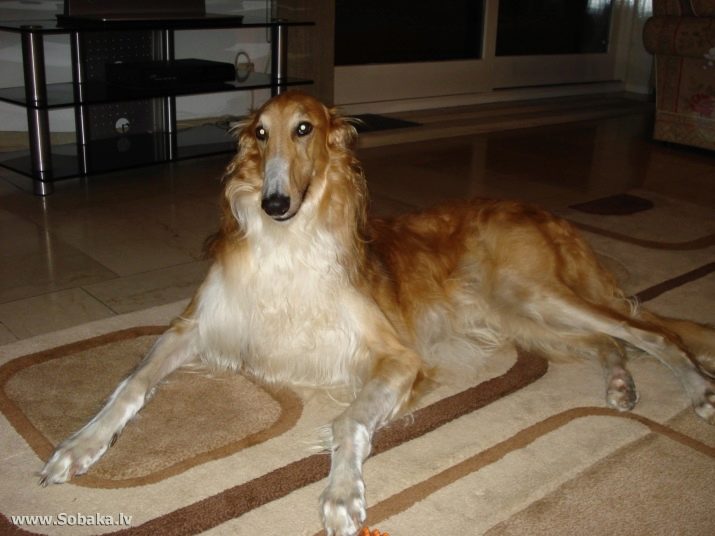
Often, professionals compare pets with cats, since greyhounds like to warm themselves by the battery, sit comfortably in an armchair, and often they are not visible or heard in the house.
This breed with sophisticated mental organization should not be trained, but rather patiently educated. It is important to establish a special contact with the animal, in which the pet understands the owner at a glance. Such relationships require complete trust, respect and understanding. Canine greyhound it is important that the owner is present and that they care for her, take care of her, communicate with her and play with her.
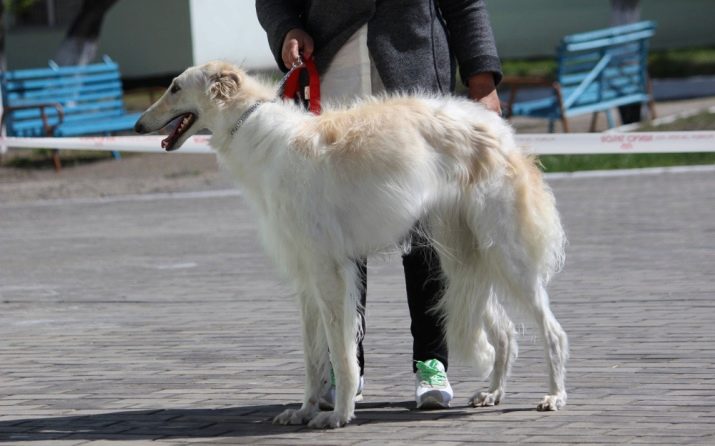
In order to win the attention of the owner, she will not follow his tail and bother him, her character will not allow this.
The dog, subtly capturing the psychological state of the owner at the subconscious level, may well play the role of a real antidepressant, trustingly resting your head on your knees and radiating calm and comfort. Her even temperament, lack of excitement in behavior will do the trick. However, during the walk, the greyhound should be kept on a leash, and it is better to walk in a closed area.
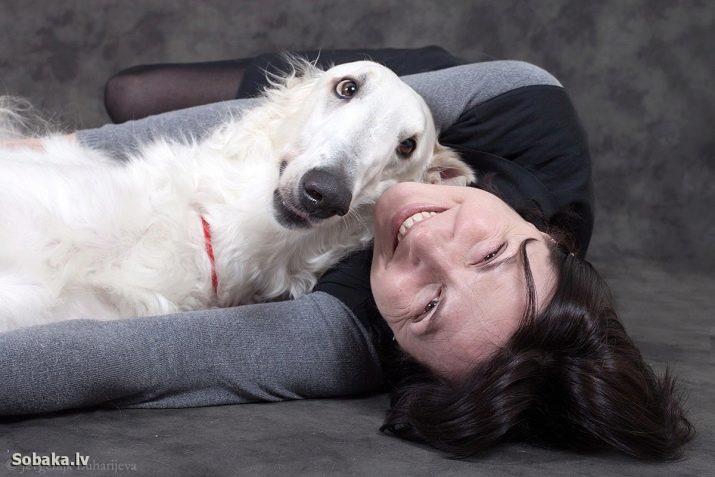
Outside of hunting and walking, a greyhound behaves passively, settles down on a sofa or lies calmly, being placed at the owner’s feet. To spoil wallpaper, nibble shoes or furniture - this is not in her aristocratic spirit. The psyche of the dog is vulnerable, so it suffers pain injustice, and the punishment for it is a real tragedy.
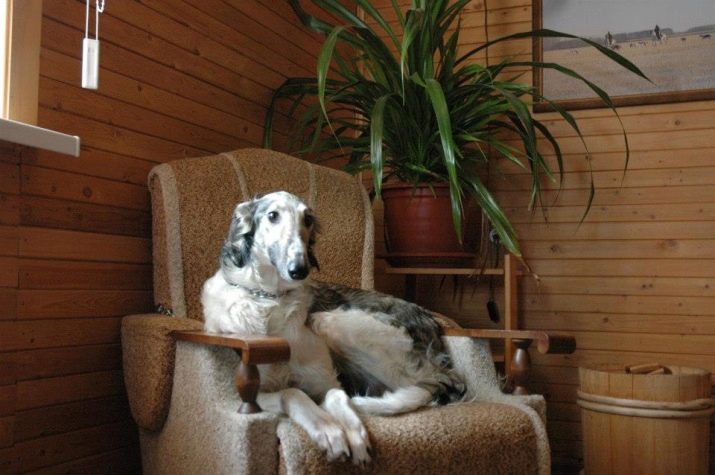
The instant excitability of the animal requires special attention. A cat accidentally caught during a walk immediately turns into an object of hunting, because the main calling of the breed is hunting for game. The instinct for persecution is developed to their maximum.
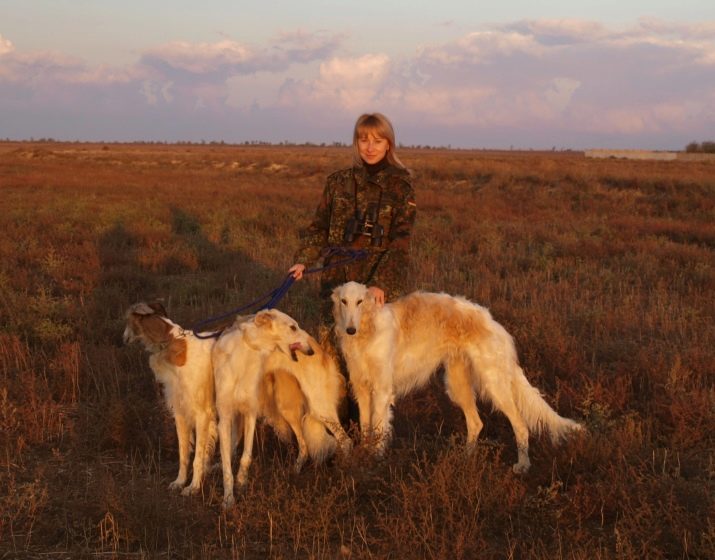
Intelligent parameters are well developed in a greyhound, but inexperienced owners often encounter difficulties in the educational process. This is because many people forget that this animal is far from a companion or service dog, and the style of upbringing should be completely different, since all the dog’s intellect is geared specifically for hunting.
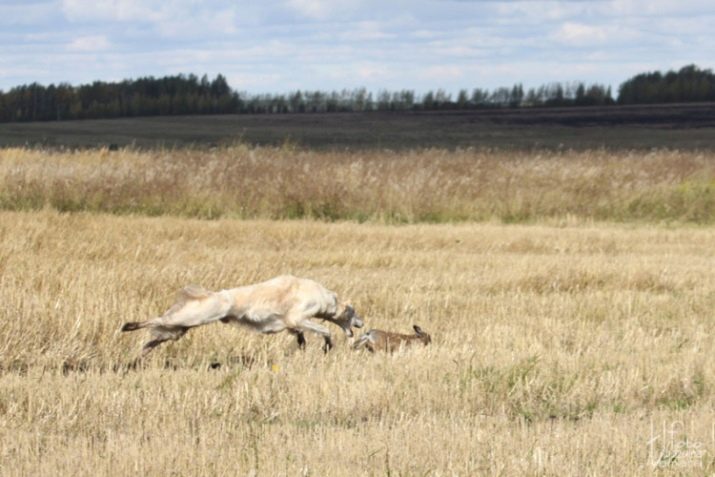
In everyday life, in accordance with a passive way of life, the impression is created that the canine intellect is resting with the dog.
Conditions for keeping
The absence of special space requirements for Russian borzoi dogs allows them to be safely kept in apartment conditions (with frequent walking). It must be remembered that dogs do not like ordinary loungers, and they are unlikely to be satisfied with a modest corner in the hallway. They love to lie on the couch, bed or sit comfortably in an armchair. It is in these conditions that dogs relax and give rest to their backs.
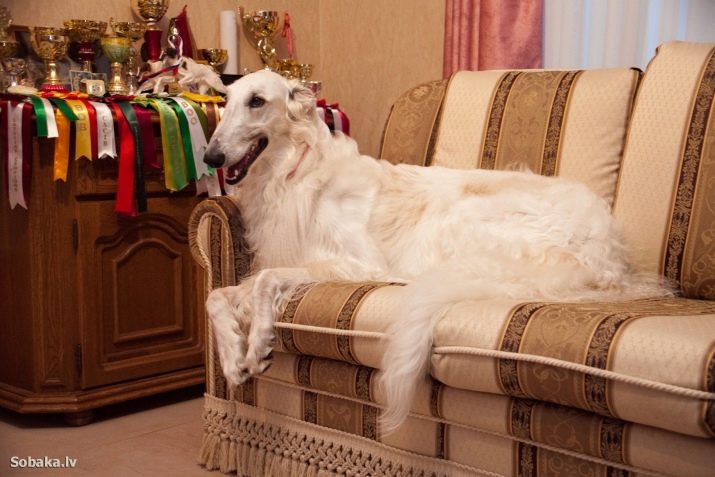
Some professionals even recommend a separate sofa with an orthopedic mattress for them.
It is recommended that yard greyhounds be kept in an aviary equipped with an insulated booth not less than 1 m high and about 1.5 m² in area. For two individuals, the booth area must be at least 2.5 m².
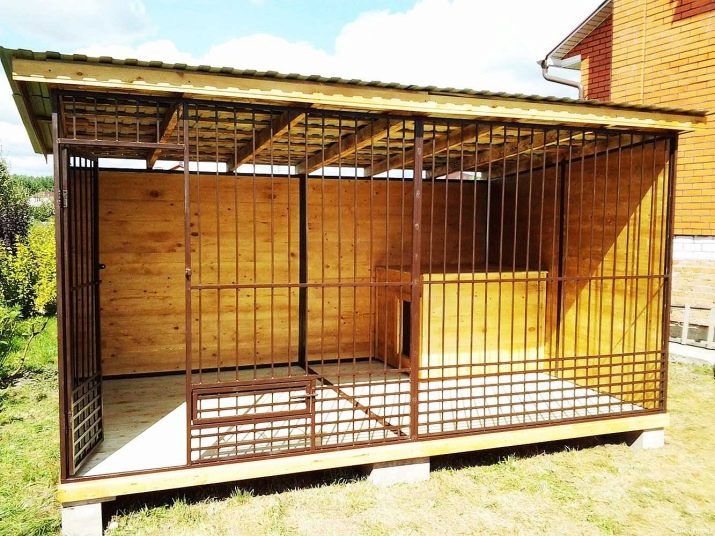
Russian greyhound puppies require special care.
Nutrition and Care
Eating greyhounds requires a careful approach, often pets are very picky in food. Greyhounds need a particularly balanced feed, as well as food of animal and plant nature.
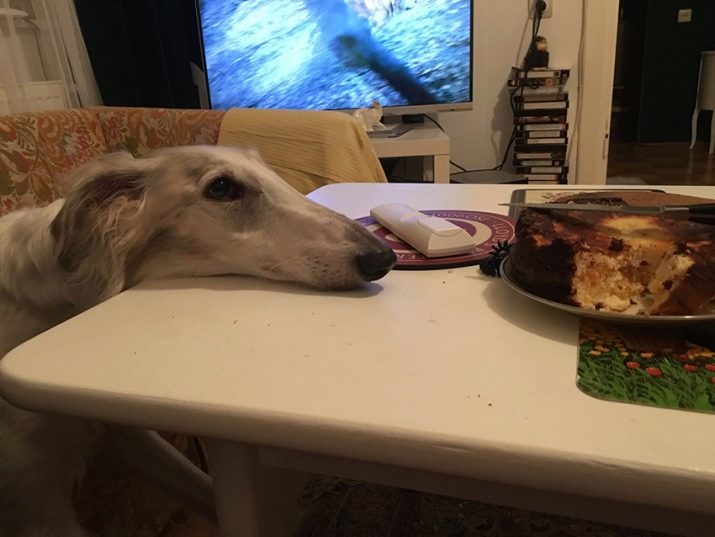
Greyhounds occasionally have intestinal obstruction, which poses a serious threat to their body. For healthy digestion of the animal, and therefore well-being, the dog is fed repeatedly, in small portions. After eating physical activity is strictly forbidden to dogs, a short rest will be enough for a normal digestion process.
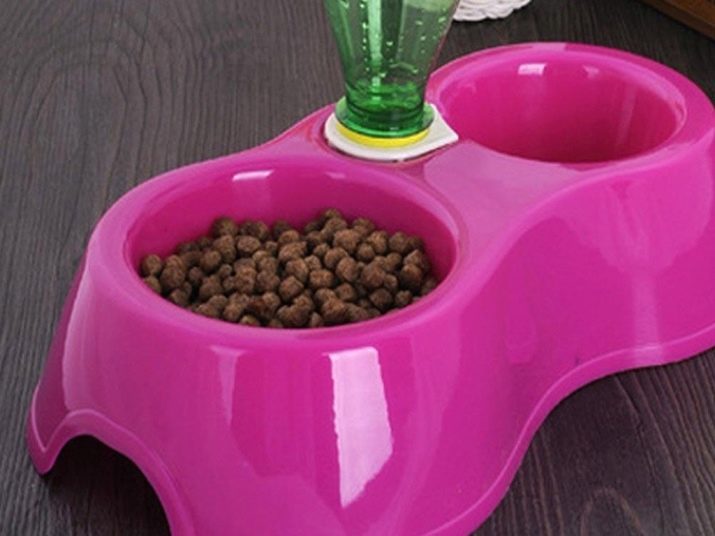
Compliance with several simple rules for feeding dogs:
- food should be freshly cooked, slightly warm;
- it is important to monitor the presence of fresh water in the dishes;
- the bowl should be kept clean at all times;
- before the walk, the dog is not recommended to feed.

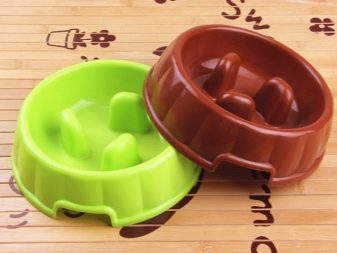
A number of products prohibited for use in feeding dogs:
- fatty meats;
- smoked meats;
- spicy spices;
- sweets;
- legumes;
- bakery products;
- roast;
- river fish;
- bones are tubular.
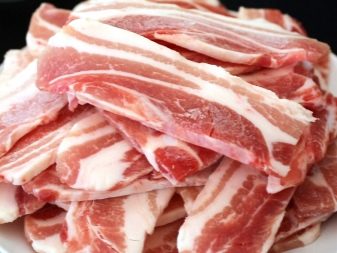
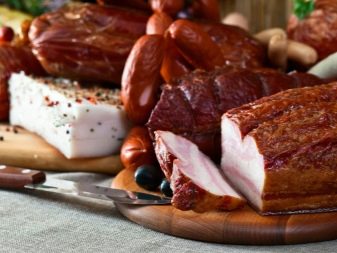

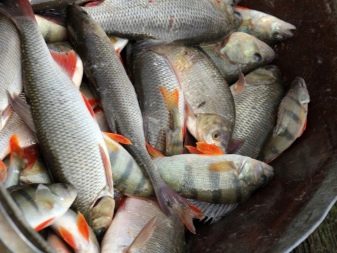
Useful for greyhounds:
- meat of rabbit, chicken, cow, turkey;
- cereals in cereals;
- dairy products (kefir, low-fat cottage cheese);
- greens;
- vegetables (squash, carrot, pumpkin);
- fruits (apples);
- per day 1 teaspoon of vegetable oil.
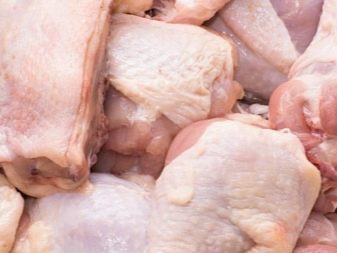
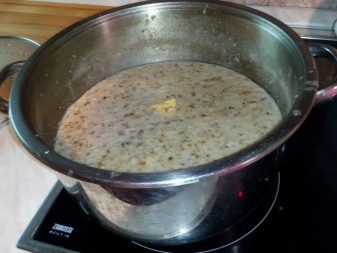


The process of caring for a greyhound does not require much effort. Her canine is self-cleaning, and after walking in dry weather, shaking is enough for the dog. The greyhound should be combed 2-3 times a week with a brush. To simplify the process, the cover is usually sprayed with air conditioning. During molting, the dog is recommended comb out every day: this removes dying hair faster, and at the same time a skin massage is performed.
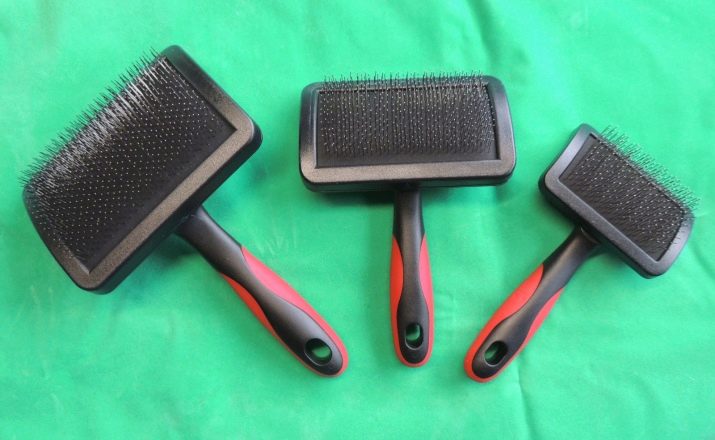
Other rules for pet care for dogs.
- They should be bathed as necessary or once a month.
- Ears are cleaned once a week with a cotton swab previously moistened in warm water.
- Eyes flushed weekly once. Use a soft cloth dipped in a weak tea leaves or in a chamomile broth.
- Teeth are cleaned weekly with a special toothpaste using a brush or finger brush. To prevent the occurrence of stones on the teeth, the diet should contain fresh tomatoes.
- Claws and paws after walking wipe with a damp cloth. In winter, it is necessary to monitor the condition of the pads on the paws, where cracks may appear. It will be useful to include vegetable oil in the diet, which also wipes the pads.
- Claws are trimmed monthly using a clipper. If the dog moves a lot, then this procedure is performed less frequently. It is important to remember the fifth, so-called profit finger on the front paws. The finger is not long, it does not reach the ground, and therefore the claw does not erase, it is necessary to monitor its length constantly.
- Every month, the dog's cover should be treated with a composition against fleas and ticks, which represent a real threat to the animal's body. Fleas cause an allergic reaction in greyhounds, and ticks carry pyroplasmosis. The composition is applied to the greyhound cover; after application, it must not be bathed for 10 days.
- At the end of walks, it is always necessary to inspect the pet in order to identify parasites. For hunting dogs, this measure is extremely relevant. If a parasite is found, it is better to seek help from a veterinarian. In the following days, it will be useful to monitor the animal for control of its activity, appetite and temperature.
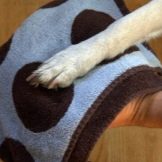


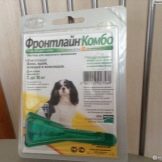
Typical diseases for Russian greyhounds are:
- intestinal obstruction;
- improper joint development;
- heart rhythm disturbances;
- cataract.
The greyhound is walked at least twice a day - in the morning and in the evening. In the morning, within half an hour, in the evening - an hour and a half, to enable the dog to actively run before bedtime.On weekends, it will be useful to go outdoors, giving the borzoi the opportunity to run up to 10 km, to tone the muscle system so that the animal does not become depressed.
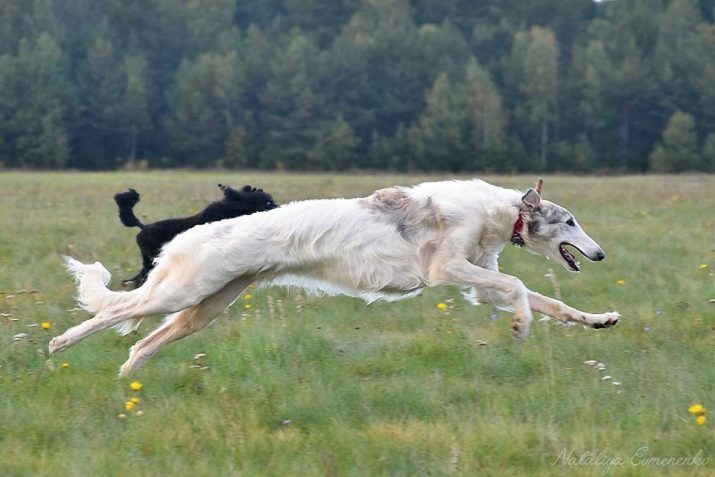
A bitch is able to qualitatively feed no more than seven babies. If there are more of them, then from the 4th to 5th day you need to either feed them with milk, using a pacifier, or decide on the nurse. Mother feeds puppies 1-1.5 months. It’s not worth taking all the puppies from the bitch right away - her milk should be gradually reduced.

On the day of 2-month-old babies, they are fed 6 times, 3-4-month-olds - 5, 4-6-month-olds - 4, older ones - 3, one-year-olds - 2 times.
An excellent food for 3-month-old babies is a mixture of whole milk with bread, oatmeal, as well as minced meat. A little later, they begin to give ground oats, steamed in boiling water and diluted with milk. It is better to give meat boiled, raw - only proven. Various dairy products (curd products and sour milk) are useful.

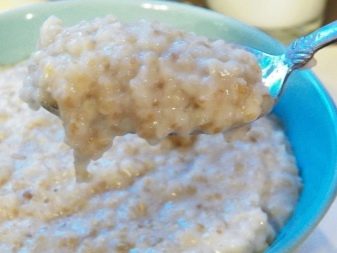
The growth of the babies ends by about a year, then they gradually mature. Greyhound needs vitamins that are rich in grated carrots and other vegetables, both raw and boiled. In small quantities, salt is needed for babies and mature dogs. Vitamins supplemented with fish oil is useful for puppies.
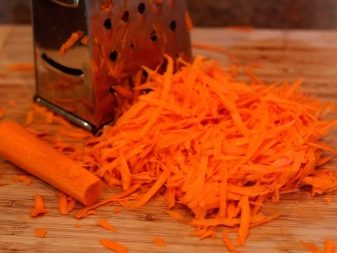

Parenting and training
The main purpose of the greyhounds is dog hunting. This brings a number of features to the upbringing, training, and behavioral aspects of the greyhounds that are important to know and take into account in everyday work with them. Dogs for canine hunting should be less dependent on the immediate commands of the owner than, for example, service breeds. The main qualities of canine greyhounds are ingenuity, the ability to make decisions independently, full dedication in the hunting process.
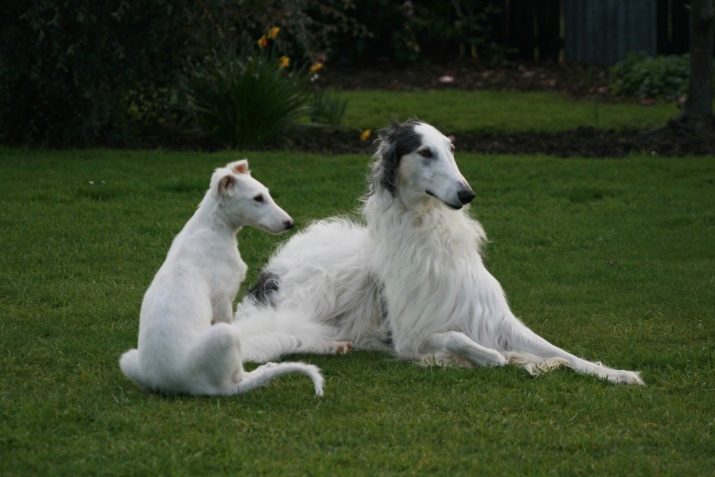
Greyhounds completely lack any servility or servility to the owner. During breeding, the readiness for hunting and hunting excitement were carefully inculcated.
Every year, the dog should be actively trained and raised. Otherwise, she will get bored and begin to lose all her “fighting” qualities. It is recommended to take two puppies for training, so that they actively move and acquire high-speed qualities. Regularity and intensity of training is the key to success and excellent well-being of animals. Significant loads should not be given to babies.
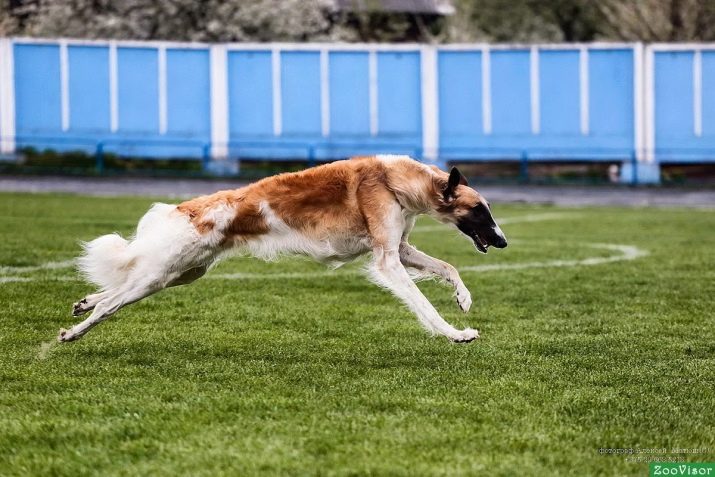
At 5 months, they may well stubbornly ignore the team, showing excessive independence. Patience is the key to overcoming all the difficulties in training the greyhounds.
Greyhounds must be trained from a very young age. Given the freedom of love and the inherent desire for independence of the breed, one should not expect from them unquestioning execution of teams by analogy with the service breeds. However, the greyhound must possess basic commands and skills that clearly indicate what is allowed and what is not allowed.
Calmness and even a certain apathy of greyhounds in everyday life is deceiving. In the conditions of hunting, the dogs are instantly rearranged so that it is difficult to recognize the phlegmatic and unhurried individual who obediently brings the owner a newspaper for breakfast.
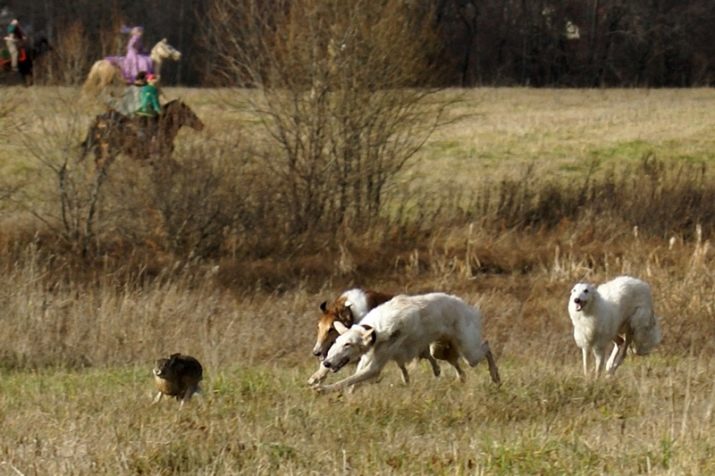
In ancient times, greyhounds were used in hunting wolves, because a greyhound could hunt such a powerful predator alone, and they were always used to pursuing their prey to the last. therefore training should be aimed either at instilling hunting skills or exhibit behavior.
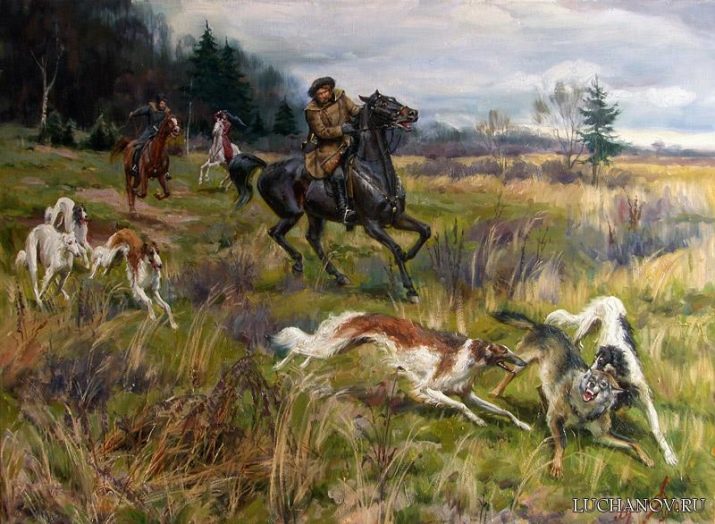
It is not advisable to use the dog as a guard or guard.
The basis and purpose of raising a puppy is to train him at a young age to distinguish everyday reality from playing and hunting. The dog should not rush at everything that moves during the walking - here the emphasis is on the team "nearby", the execution of which should be accompanied by stimulation of feeding (edible bonus).
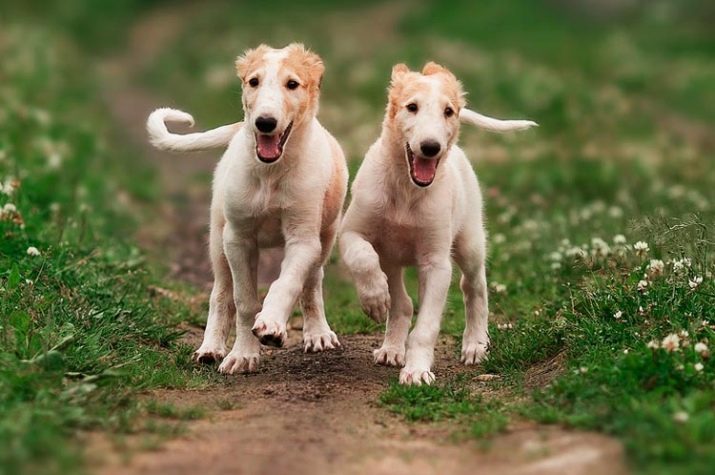
If a young dog is unreasonably actively reacting to people, animals or moving objects, you need to use the old team of breeders "scum".Even a puppy will be able to quickly master this command, thanks to genetic memory. Greyhounds can learn and perform many complex tricks, they often participate in circus performances. Borzoi dogs are excellently trained animals that successfully act in obedience and agility.
However, the independence and stubbornness of dogs suggests the use of a significant number of bonuses in training, as well as a soft and patient approach. Dogs are very sensitive to shouts and begin to get nervous. Crude methods of education and training of the Russian canine borzoi are strictly prohibited.
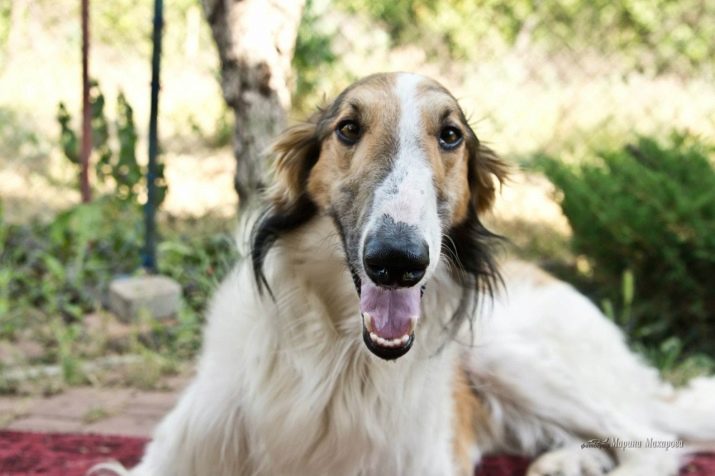
About the features of this breed of dogs, see below.








































